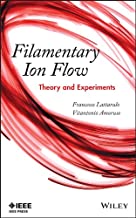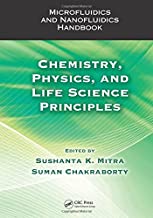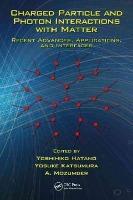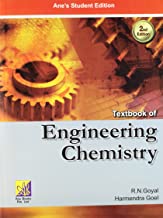Filamentary Ion Flow: Theory & Experiments
Original price was: ₹9,491.74.₹7,593.39Current price is: ₹7,593.39.
ISBN: 9781118168127
Author/Editor: Francesco Lattarulo
Publisher: John Wiley
Year: 2014
1 in stock (can be backordered)
Description
Presents all-new laboratory-tested theory for calculating more accurate ionized electric fields to aid in designing high-voltage devices and its components
Understanding and accurately calculating corona originated electric fields are important issues for scientists who are involved in electromagnetic and electrostatic studies. High-voltage dc lines and equipment, in particular, can generate ion flows that can give rise to environmental inconveniences.
Filamentary Ion Flow: Theory and Experiments provides interdisciplinary theoretical arguments to attain a final model for computational electrostatics in the presence of flowing space charge. Based on years of extensive lab tests pertaining to the physical performance of unipolar corona ion flows, the book covers the enlarging of conventional electrostatic applications, which allows for some emerging and uncharted interests to be explored.
Filamentary Ion Flow:
Examines the theoretical discussions for creating a model of computational electrostatics involved with flowing space charges
Presents new theory and experimental data based on extensive testing
Offers potential design applications utilizing the theory
Helps scientists who are involved in electromagnetic and electrostatic studies understand and accurately calculate corona originated ion flow fields
Filamentary Ion Flow: Theory and Experiments is ideal for electrical engineers and research scientists interested in high-voltage technology, computational electrostatics, and electromagnetic theory.
Additional information
| Weight | 0.526 kg |
|---|
Product Properties
| Year of Publication | 2014 |
|---|---|
| Table of Contents | PREFACE xi ACKNOWLEDGMENTS xv INTRODUCTION xvii PRINCIPAL SYMBOLS xxv 1 FUNDAMENTALS OF ELECTRICAL DISCHARGES 1 1.1 Introduction 1 1.2 Ionization Processes in Gases 1 1.2.1 Ionization by Electron Impact 2 1.2.2 Townsend First Ionization Coefficient 3 1.2.3 Electron Avalanches 5 1.2.4 Photoionization 6 1.2.5 Other Ionization Processes 6 1.3 Deionization Processes in Gases 7 1.3.1 Deionization by Recombination 7 1.3.2 Deionization by Attachment 7 1.4 Ionization and Attachment Coefficients 9 1.5 Electrical Breakdown of Gases 10 1.5.1 Breakdown in Steady Uniform Field: Townsend's Breakdown Mechanism 11 1.5.2 Paschen's Law 12 1.6 Streamer Mechanism 13 1.7 Breakdown in Nonuniform DC Field 14 1.8 Other Streamer Criteria 16 1.9 Corona Discharge in Air 17 1.9.1 DC Corona Modes 17 1.9.2 Negative Corona Modes 18 1.9.3 Positive Corona Modes 20 1.10 AC Corona 22 1.11 Kaptzov's Hypothesis 23 2 ION-FLOW MODELS: A REVIEW 25 2.1 Introduction 25 2.2 The Unipolar Space-Charge Flow Problem 26 2.2.1 General Formulation 26 2.2.2 Iterative Procedure 29 2.2.3 The Unipolar Charge-Drift Formula 29 2.3 Deutsch's Hypotheses (DH) 30 2.4 Some Unipolar Ion-Flow Field Problems 31 2.4.1 Analytical Methods 33 2.4.2 Numerical Methods 40 2.5 Special Models 51 2.5.1 Drift of Charged Spherical Clouds 51 2.5.2 Graphical Approach 53 2.6 More on DH and Concluding Remarks 58 3 INTRODUCTORY SURVEY ON FLUID DYNAMICS 63 3.1 Introduction 63 3.2 Continuum Motion of a Fluid 64 3.3 Fluid Particle 65 3.4 Field Quantities 66 3.5 Conservation Laws in Differential Form 67 3.5.1 Generalization 67 3.5.2 Mass Conservation 68 3.5.3 Momentum Conservation 69 3.5.4 Total Kinetic Energy Conservation 70 3.6 Stokesian and Newtonian Fluids 71 3.7 The Navier Stokes Equation 72 3.8 Deterministic Formulation for et 73 3.9 Incompressible (Isochoric) Flow 73 3.9.1 Mass Conservation 73 3.9.2 Subsonic Flow 74 3.9.3 Momentum Conservation 74 3.9.4 Total Kinetic Energy Conservation 75 3.10 Incompressible and Irrotational Flows 75 3.11 Describing the Velocity Field 76 3.11.1 Decomposition 76 3.11.2 The v-Field of Incompressible and Irrotational Flows 76 3.11.3 Some Practical Remarks and Anticipations 77 3.12 Variational Interpretation in Short 78 3.12.1 Bernoulli's Equation for Incompressible and Irrotational Flows 78 3.12.2 Lagrange's Function 80 4 ELECTROHYDRODYNAMICS OF UNIPOLAR ION FLOWS 87 4.1 Introduction 87 4.2 Reduced Mass-Charge 88 4.3 Unified Governing Laws 90 4.3.1 Mass-Charge Conservation Law 90 4.3.2 Fluid Reaction to Excitation Electromagnetic Fields 92 4.3.3 Invalid Application of Gauss's Law: A Pertaining Example 93 4.3.4 Laplacian Field and Boundary Conditions 95 4.3.5 Vanishing Body Force of Electrical Nature 96 4.3.6 Unified Momentum and Energy Conservation Law 97 4.3.7 Mobility in the Context of a Coupled Model 98 4.3.8 Some Remarks on the Deutsch Hypothesis (DH) 100 4.4 Discontinuous Ion-Flow Parameters 103 4.4.1 Multichanneled Structure 103 4.4.2 Current Distribution 104 4.4.3 More on the Average Quantities 108 4.5 Departures from Previous Theories 109 4.5.1 Ion-Drift Formulation 110 4.5.2 Comparative Discussion 112 4.5.3 Ionic Wind in the Drift Zone 117 4.6 Concluding Remarks on the Laplacian Structure of Ion Flows 120 5 EXPERIMENTAL INVESTIGATION ON UNIPOLAR ION FLOWS 131 5.1 Introduction 131 5.2 V-Shaped Wire Above Plane 136 5.2.1 Main Observables 144 5.3 Two-Wire Bundle 146 5.3.1 Main Observables 154 5.4 Inclined Rod 156 5.4.1 Main Observables 159 5.5 Partially Covered Wire 162 5.5.1 Main Observables 167 5.6 Pointed-Pole Sphere 168 5.6.1 Main Observables 170 5.7 Straight Wedge 170 5.7.1 Main Observables 174 5.8 Discussion 175 5.8.1 Supplementary Theoretical Analysis 175 5.9 Generalization According to Invariance Principles 179 REFERENCES 185 INDEX 193 |
| Author | Francesco Lattarulo |
| ISBN/ISSN | 9781118168127 |
| Binding | Hardback |
| Edition | 1 |
| Publisher | John Wiley |
You must be logged in to post a review.






Reviews
There are no reviews yet.